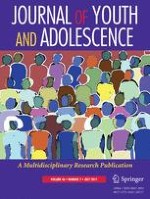14-11-2016 | Empirical Research
Antecedents of Suicide among Youth Aged 11–15: A Multistate Mixed Methods Analysis
Gepubliceerd in: Journal of Youth and Adolescence | Uitgave 7/2017
Log in om toegang te krijgenAbstract
Suicide is the second leading cause of death for youth aged 11 to 15, taking over 5,500 lives from 2003 to 2014. Suicide among this age group is linked to risk factors such as mental health problems, family history of suicidal behavior, biological factors, family problems, and peer victimization and bullying. However, few studies have examined the frequency with which such problems occur among youth suicide decedents or the context in which decedents experience these risk factors and the complex interplay of risk that results in a decedent’s decision to take his/her own life. Data from a random sample of 482 youth (ages 11–15) suicide cases captured in the National Violent Death Reporting System from 2003 to 2014 were analyzed. The sample had fewer girls than boys (31 vs. 69 %) and comprised primarily White youth (79 %), but also African Americans (13 %), Asians (4 %), and youth of other races (4 %). Narrative data from coroner/medical examiner and law enforcement investigative reports were coded and analyzed to identify common behavioral patterns that preceded suicide. Emergent themes were quantified and examined using content and constant comparative analysis. Themes regarding antecedents across multiple levels of the social ecology emerged. Relationship problems, particularly with parents, were the most common suicide antecedent. Also, a pattern demonstrating a consistent progression toward suicidal behavior emerged from the data. Narratives indicated that youth were commonly exposed to one or more problems, often resulting in feelings of loneliness and burdensomeness, which progressed toward thoughts and sometimes plans for or attempts at suicide. Continued exposure to negative experiences and thoughts/plans about suicide, and/or self-injurious acts resulted in an acquired capacity to self-harm, eventually leading to suicide. These findings provide support for theories of suicidal behavior and highlight the importance of multi-level, comprehensive interventions that address individual cognitions and build social connectedness and support, as well as prevention strategies that increase awareness of the warning signs and symptoms of suicide, particularly among family members of at-risk youth.
